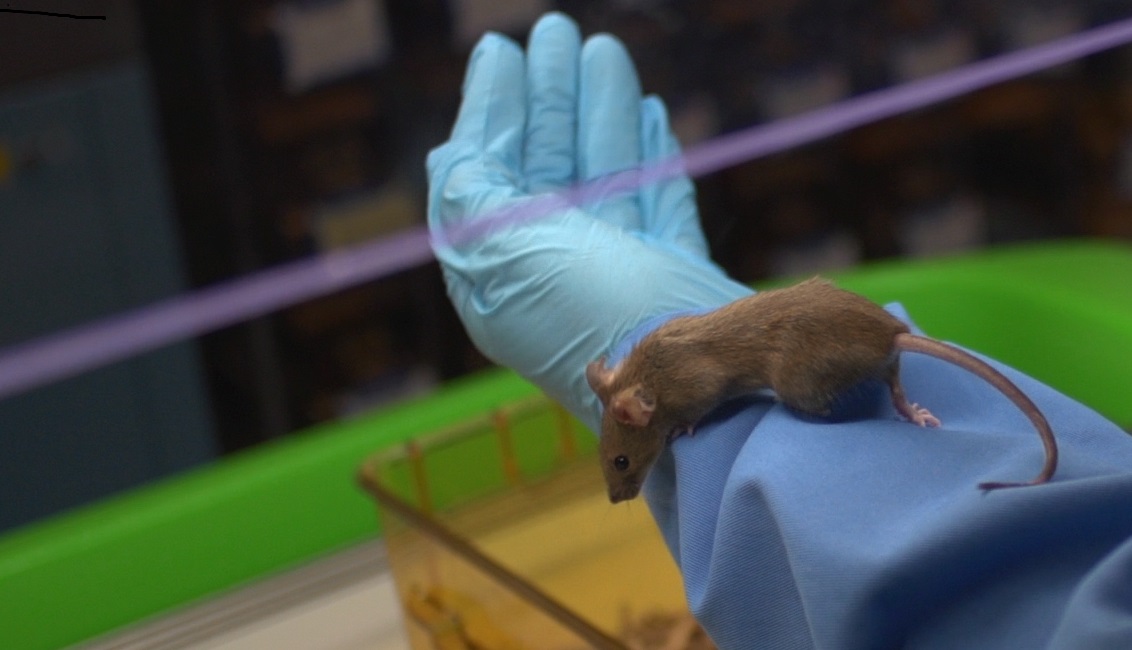The UK's top ten biomedical research universities, including Oxford, have just announced their figures for animal research. The universities conducted a third of the UK's animal research in 2015, delivering new insights and potential treatments for many widespread and debilitating conditions.
The ten UK universities who do the most world-leading biomedical research have announced their animal research statistics, revealing that they collectively conducted a third of all UK animal research in 2015. They include Oxford, recently named the world's leading university for medical and health teaching and research for the sixth year running.
The top ten institutions conduct more than two thirds of all UK university animal research between them, completing a combined total of 1.37 million procedures. Over 99% of these procedures were carried out on rodents or fish, and in line with national data they were roughly evenly split between experiments and the breeding of genetically modified animals.
The ten universities are listed below alongside the total number of procedures that they carried out in 2015:
University of Oxford: 226,214
University of Edinburgh: 212,695
UCL: 202,554
University of Cambridge: 181,080
King’s College London: 175,296
University of Manchester: 145,457
Imperial College London: 101,179
University of Glasgow: 49,082
University of Birmingham: 47,657
University of Nottingham: 31,689
The universities employ more than 90,000 staff between them, with the larger institutions tending to conduct the most animal research.
All universities are committed to the ‘3Rs’ of replacement, reduction and refinement. This means avoiding or replacing the use of animals where possible, minimising the number of animals used per experiment and minimising suffering to improve animal welfare. However, as universities expand and conduct more research, the total number of animals used can rise even if fewer animals are used per study.
The Vice-Chancellor of Oxford University, Professor Louise Richardson, said: “Five British universities are ranked in the world’s top ten for medical science. At Oxford, our scientists are making significant advances in understanding cancer, heart disease, psychiatric illness and a host of other health problems. Research involving animals remains critical to these medical advances. We are committed to ensuring that the animals we use are treated humanely and are equally committed to transparency in all our practices. It is very much in our interest to ensure that everyone understands the nature of our medical research and the many benefits it brings.”
All ten universities are signatories to the Concordat on Openness on Animal Research in the UK, a commitment to be more open about the use of animals in scientific, medical and veterinary research in the UK. 107 organisations have signed the concordat including UK universities, charities, research funders and commercial research organisations.
UCL President & Provost, Professor Michael Arthur, said: “The fact that we perform a significant proportion of the UK’s leading biomedical research is something to be proud of. It’s no surprise that the universities who conduct the most world-leading research also use the most animals; despite advances in non-animal techniques, animals offer answers to many research questions that alternative methods cannot yet provide.”
Animal research has played a key role in the development of virtually every medicine that we take for granted today. However, despite decades of dedicated research, many widespread and debilitating conditions are still untreatable. Medical research is a slow process with no easy answers, but animal research helps to take us incrementally closer to treatments for cancer, dementia, stroke and countless other conditions.
While many animal studies do not lead directly to treatments for diseases, ‘basic science’ research helps scientists to understand different processes in the body and how they can go wrong, underpinning future efforts to diagnose and treat various conditions. Additionally, many studies will show that a line of research is not worth pursuing. Although this can be disappointing, such research is incredibly valuable as scientists need to know which methods do not work and why so that they can develop new ones. Animal studies can also help to answer a wide range of research questions that are not directly related to diseases, such as exploring how genes determine traits or how brain functions develop.
Case study: Promising new treatment for spinal disease
A research team led by the University of Oxford has found a promising treatment for degenerative disease spinal muscular atrophy (SMA), a leading genetic cause of child death.
SMA can result in motor neurone degeneration and increasing muscle weakness. Existing proposed treatments use a splice-switching oligonucleotide or SSO. This has to be injected into the spine with a lumbar puncture, making treatment less straightforward.
The Oxford team has developed a new treatment called Pip6a-PMO. The SSO can be delivered intravenously and in lower doses, using a peptide called Pip6a.When young mice with genetically engineered SMA were injected with the Pip6a-PMO, the results were rapidly clear: At just seven days old they were noticeably heavier and faster growing than untreated mice; at 12 days, tests found they were much stronger than untreated counterparts. Tests also found that mice treated with two doses of Pip6a-PMO survived an average of 457 days - 38 times longer than untreated mice.
The advantage of Pip6a is that it is both a central nervous system treatment and a systemic treatment for the wider body. Such an approach could also work for diseases like Parkinson’s, Huntingdon’s and ALS. The Oxford team is currently planning a 2-year study that would start next year, to evaluate the treatment in patients.
http://www.ox.ac.uk/news/2016-09-20-trial-offers-hope-treatment-spinal-muscular-atrophy
